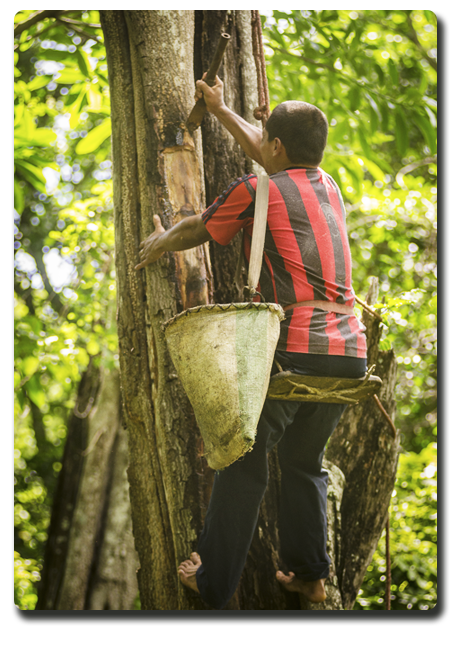PRODUCTION
Production of Peru Balsam is carried out after the rains in November/December until May, by fire-scorching and wounding the bark of the tree, leaving approx. 1 week, before slashing and removing rectangular strips of outer layers of bark (typically some 30cm. x 15 cm.), which are crushed, boiled into hot water and pressed (giving ´Balsam of Cascara´, Balsam of the Bark). As well as the bark, the tree is also worked – according to Poucher (1936), after the outer layers of bark are removed exposing the wood, this is covered with cloths or rags to collect the exudates over 15-20 days, the cloths or rags being subsequently boiled to recover the balsam and pressed in a rope press, (giving ‘Balsam de Pañal’, the major part of the yield).
In a few days a third exudation (‘Balsam de Contrapique o Tacuazonte ‘) is collected with cloths that are boiled and pressed to recover the resin. In the pressing process the balsam sinks to the bottom (S.G. 1.150 to 1.170) and the water is decanted off and the resin strained.
A combination of these three tapping in definite proportions is a ´Raw Balsam´ that then is boiled to evaporate the residual water (this called ¨Purification Process¨). This ¨Purification¨ gives Peru Balsam as we know it commercially. The tree may be tapped in this way at fortnightly intervals up to 8-9 months per year. Average yields have been reported to be between 0.25 to 0.50Kg per tree per annum around 60 years of age giving maximum yields (Manual of Good Practice in the Production of Balsam of El Salvador, ,OIRSA 2006).
